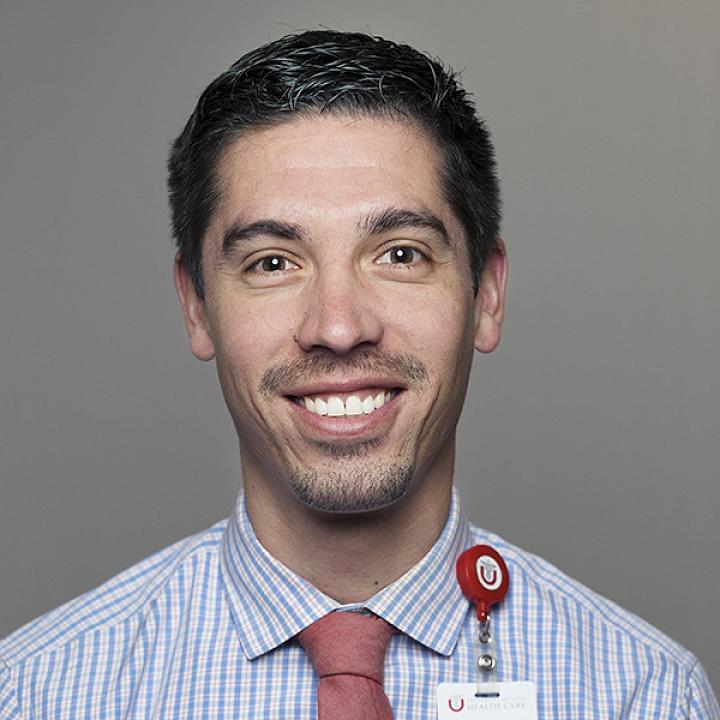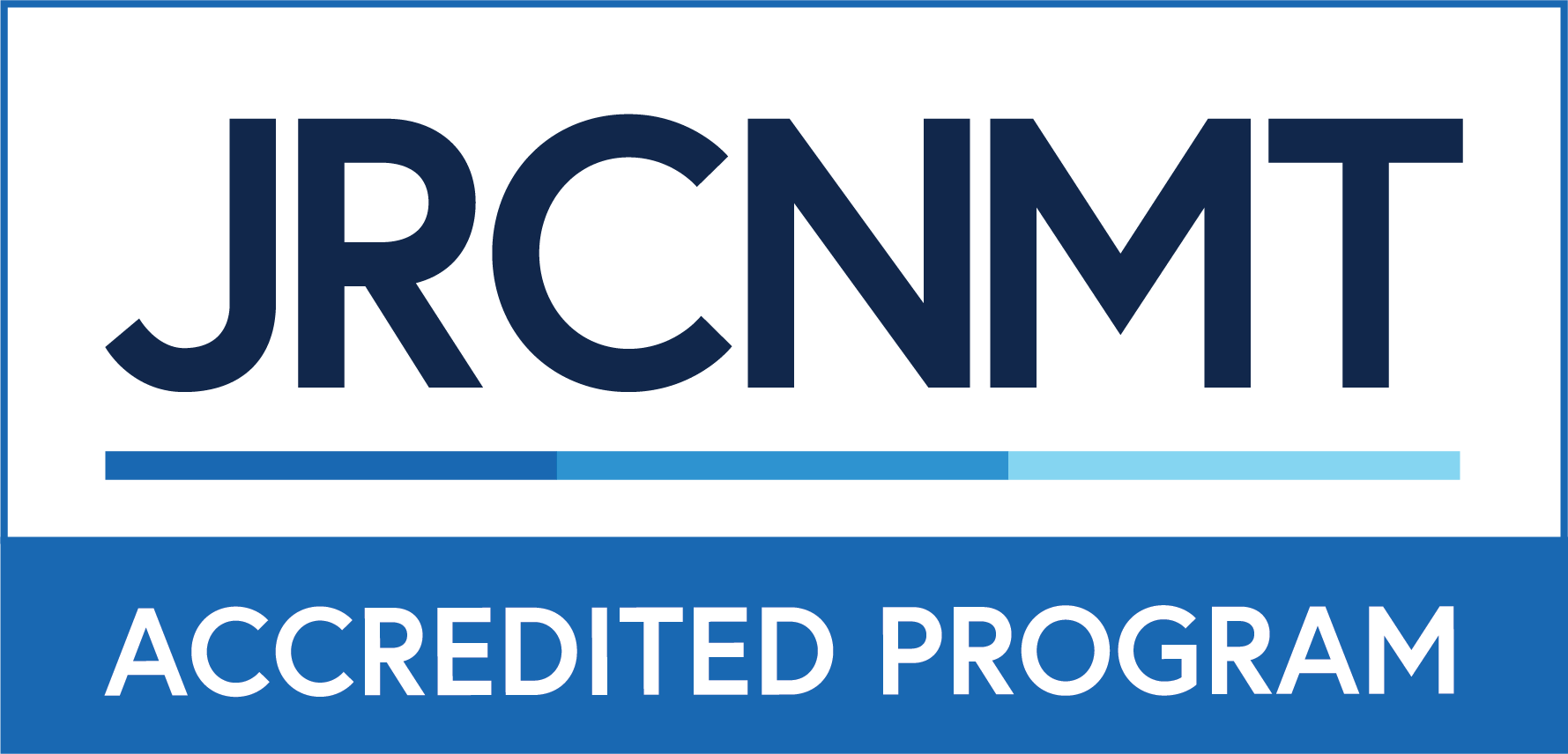
CT Technologist Program

CT Technologist Program
On This Page
What is Computed Tomography (CT)?
Computed tomography (CT) scan is a useful diagnostic tool for detecting diseases and injuries. It uses a series of X-rays and a computer to produce a 3D image of soft tissues and bones. CT is a painless, noninvasive way to diagnose conditions. It can be used to image many parts of the body, such as the brain, facial bones, neck, spine, chest, abdomen and pelvis. CT plays a vital role in diagnosing trauma patients.
What are the responsibilities of a CT technologist?
A CT technologist must be able to perform computed tomographic procedures in an efficient and competent manner. It is essential that the radiographer has a thorough knowledge of anatomy and can make judgments about the formation of the image in regards to anatomical identification. Knowledge of contrast media, equipment operation, sterile technique and emergency procedures is required. Patient care responsibilities will include venipuncture, care of IVs and other patient aides and friendly caring communication. They work quickly and efficiently with trauma and cancer patients on a daily basis. CT technologists' responsibilities are also expanding in the areas of post-processing and image reconstruction.
The demand for well-qualified CT technologists is on the rise with scanners becoming faster, types of imaging procedures expanding and increased concern over procedural dose levels. Nuclear medicine technologists are discovering the necessity of studying CT with the addition of PET/CT. On-the-job training of CT technologists does not meet the educational needs of todays CT technologist. As a technologist learning the art of CT, you deserve a well-structured educational process.
How Do I Become a CT Technologist?
The American Registry of Radiologic Technologists (ARRT) is a leading credentialing organization that recognizes qualified individuals in medical imaging, and ARRT offers a post-primary certification in Computerized Tomography. Certification in CT is a requirement in many states and demonstrates a level of distinction from non-certified technologists. Some institutions will reward technologists who have earned CT certification with a salary increase.
To be eligible for the ARRT post-primary certification exam in CT, you must be currently certified in radiography, radiation therapy, or nuclear medicine and complete the established clinical experience requirements. The CT examination consists of 165 multiple choice questions that relate directly to the field of CT. There are a variety of CT programs available and students are encouraged to find the one that meets their needs and interests. The University of Utah Health's CT program was designed to be competitive by offering a comprehensive program of study at a world-class institution with reasonable length and tuition costs. The program's goal is to educate CT technologists who understand the field of CT and can perform at a highly competent level. Graduates will be prepared to complete and pass the CT certification examination. Instruction is provided by qualified technologists and radiologists and includes classroom settings with in-person lectures and discussion.
Overview
The Department of Radiology and Imaging Sciences offers a six (6) month certificate program in Computerized Tomography (CT) for certified Radiologic Technologists RT (R), Radiation Therapists RT (T) or Nuclear Medicine Technologists RT (N) or NMTCB. Students will learn to create electronic cross-sectional images of anatomy as an aid in the diagnosis of disease and injury using ionizing radiation. The program is offered twice per year, starting in January and in July.
Graduates of this program are eligible to take the advanced certification exam provided by the American Registry of Radiologic Technologists (ARRT) (CT).
University of Utah Health has 11 state-of-the-art CT scanners that include 128-slice Siemens scanners and the unique dual source scanning technology, the Siemens Definition. The latest in CT technology, the "FLASH" is installed at the South Jordan Health Center. A combination of superior radiologists, experienced CT technologists and the latest equipment creates an environment where current imaging and post-processing techniques are routinely performed. The program offers a combination of clinical and didactic educational experiences that will provide the student with the necessary knowledge and skills to become an entry-level CT technologist. Students will learn how to effectively image trauma patients, screen patients, answer difficult radiation protection questions, post process 3D images, assist in biopsies and complete routine exams.
PROGRAM INFORMATION
To be eligible for the CT Program, you must have successfully passed one or more of the following certification categories or will have completed the exam by the start of the program:
- Radiography (ARRT)
- Radiation Therapy (ARRT)
- Nuclear Medicine Technology (ARRT or NMTCB)
Observation: Four hours (minimum) of observation in CT is required in order for you to apply. These hours can be arranged at one of our clinics (preferred) or you can complete the hours at a different hospital facility. See our Observation Experience page for more details.
Tuition for 2025/2026 program sessions is $5,000.00. Tuition payment plans are available as follows:
- Payment in full by first week of the program
- 2 payments: 1st payment due first week of program, final payment due 3 months following start of program.
- 3 payments: 1st payment due first week of program with 2nd & 3rd payments due 3rd and 5th months of program.
Note: The CT program is a certificate only program. As such, we are unable to accept/process any type of Federal Financial Aid or Federal Scholarships. There may be radiology scholarships provided by some radiologic technology societies, please inquire with those directly for offerings and more information. (www.asrt.org)
Additional Fees
The following are approximate costs and are subject to change:
- Scrubs: $100.00+
- Parking pass: $270.00
- Textbooks: Approx. $300.00 (we have some options to reduce this cost, students in the program will be notified of these options before the program begins).
- ARRT examination: $225.00 (ARRT-registered candidates) $450.00 (NMTCB-registered candidates)
The CT Program curriculum is accomplished with a combination of didactic and clinical learning experiences. Students are encouraged to complete 24 clinical and four didactic hours each week. At the completion of the program, the student will have completed a minimum of 450 clinical and 80 didactic hours and proven competent in all clinical experience requirements as defined by the ARRT. Students are allowed the flexibility to determine their clinical schedule but should be available to complete a minimum of 24 hours per week.
The CT curriculum was developed utilizing the American Society of Radiologic Technologist (ASRT) and the Association of Educators in the Radiological Sciences, Inc. The following constitutes a basic outline for the curriculum. All courses and clinical education are measured in clock hours.
Course Descriptions
H EDU 4700 – CT ANATOMY & PROCEDURES
This course is designed to provide detailed coverage of sectional anatomy and procedures for CT imaging. Procedures include, but are not limited to, indications, patient education, preparation, orientation and positioning, patient history and assessment, contrast media usage, scout image, selectable scan parameters, filming and archiving of the images. CT anatomy will be identified and studied in axial, sagittal, coronal and 3D planes. CT procedures will be taught for differentiation of specific structures and pathology. CT images studied will be reviewed for quality, anatomy and pathology. The concepts presented in class will provide students the information needed to be able to apply the skills directly to their clinical education to become competent in these CT imaging procedures.
H EDU 4720 – CT Physics: Instrumentation & Imaging
This course is designed to impart an understanding of the physical principles and instrumentation involved in computerized tomography. Physics concepts covered include characteristics of x-rays, CT beam attenuation, linear attenuation coefficients, tissue characteristics and Hounsfield numbers. CT image processing and display will be examined from data acquisition through post-processing and archiving and patient factors related to other elements affecting image quality will be discussed. The concepts presented in class will provide students the information needed to be able to apply the skills directly to their clinical education to become competent in these CT imaging procedures.
Competency Based Clinical Education
Clinical education provides students a competency based educational system that is necessary to become proficient in the entry-level skills required of a CT technologist. The student is required to complete a total of 450 clinical hours and the clinical experience requirements as outlined by the ARRT.
+ SCHEDULE:
The technology program administrator will establish and distribute a classroom schedule at the time of orientation. The CT program meets each Wednesday from 8:00- 11:00 for in-person lectures. Lectures are held on the hospital campus of University of Utah Health.
Clinical schedules are somewhat flexible. The student is required to maintain 24-hours per week of clinic attendance. The program offers seven CT locations and students will rotate to a new site every three weeks. Each site has specific hours for when students can attend and the student will arrange their schedule within those hours.
Students will be selected based on predictors of the student’s ability to successfully complete the program, pass the CT examination and become a productive employee in the CT field. Selected applicants must be currently certified in CPR and be able to document appropriate immunizations. Final admission for selected students is contingent upon successful completion of a criminal background check and drug screening.
The program admits approximately 5-7students to begin each January and July; students are selected from an applicant pool and can reapply for the following session if they are not admitted. See our How to Apply page for more information.
Apply Now
Our Technologist Education Programs are in high demand and are competitive. We encourage you to apply and will walk you through the process.

